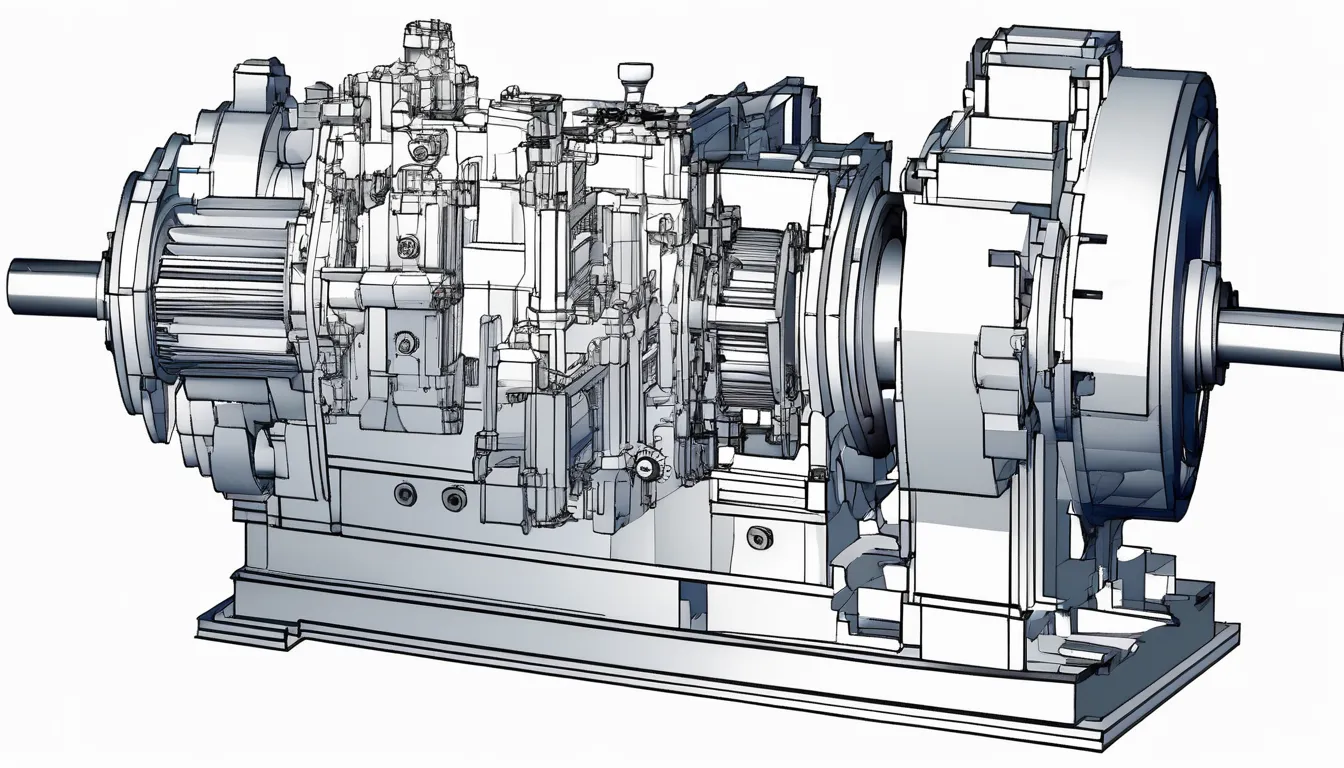When you consider the manufacturing of industrial gearboxes, it’s essential to recognize how pivotal research and development (R&D) is in driving innovation. You might be surprised to learn that investments in R&D not only enhance performance but also significantly reduce costs. As you explore the advancements in materials and manufacturing techniques, you’ll find that the future of gearbox technology is rapidly evolving. What does this mean for manufacturers aiming to stay competitive in such a dynamic market? Understanding the implications could reshape your perspective on industrial gearbox production.
Importance of R&D in Gearbox Production
In the competitive landscape of gearbox manufacturing, prioritizing research and development (R&D) is essential for staying ahead. You need to recognize that R&D drives innovation, enabling you to create products that meet evolving market demands. By investing in R&D, you can improve efficiency, reduce production costs, and enhance the overall quality of your gearboxes.
Focusing on R&D allows you to explore new technologies and techniques that can streamline your production processes. It also helps you to identify potential issues before they escalate, ensuring that your products remain reliable and durable.
Furthermore, a strong R&D foundation can open doors to new markets, as you develop specialized gearboxes tailored to specific industries or applications. Engaging in R&D fosters a culture of continuous improvement within your organization. It encourages your team to think creatively and solve problems effectively.
Innovations in Materials and Design
Investing in R&D not only enhances production processes but also paves the way for significant innovations in materials and design. You’ll find that advancements in materials science lead to stronger, lighter, and more durable components for industrial gearboxes. By exploring high-performance alloys, composites, and advanced polymers, manufacturers can create products that withstand extreme conditions, ultimately improving efficiency and longevity.
Moreover, innovative design techniques, such as topology optimization and computer-aided design (CAD), allow you to refine gearbox configurations for optimal performance. These methods enable you to minimize weight while maximizing strength and functionality.
Integrating simulation software into the design process also helps you identify potential issues before physical prototypes are built, saving time and resources.
As you prioritize R&D, consider incorporating sustainable materials and eco-friendly processes in your designs. This not only addresses environmental concerns but can also lead to cost savings in the long run.
Advanced Manufacturing Techniques
Advanced manufacturing techniques are transforming the way gearboxes are produced, streamlining processes and enhancing quality. You’ll find that automation and robotics play a crucial role in increasing precision and reducing human error.
By integrating advanced CNC (Computer Numerical Control) machines, you can achieve tighter tolerances and improved consistency in gearbox components.
Another game-changer is additive manufacturing, or 3D printing. This technique allows for rapid prototyping and the ability to create complex geometries that traditional methods can’t easily replicate.
You can significantly shorten development cycles and test designs faster, which is essential in the competitive gearbox manufacturing market.
Moreover, digital twin technology enables you to simulate the manufacturing process, allowing for real-time monitoring and adjustments.
You can identify potential issues before they arise, ensuring a smoother production flow.
Impact on Cost Efficiency
The impact of modern manufacturing techniques on cost efficiency is significant, reshaping how gearbox production operates. By leveraging automation and advanced robotics, you’re able to streamline production processes, reducing labor costs and minimizing human error. This shift not only speeds up production but also enhances precision, ensuring that each gearbox meets quality standards without the need for extensive rework.
Implementing lean manufacturing principles can further boost your cost efficiency. By identifying and eliminating waste in your operations, you can optimize resource allocation and reduce material costs. This approach allows you to produce gearboxes more economically, ultimately passing savings on to your customers.
Additionally, investing in research and development enables you to innovate and develop new materials and designs that can lower production costs. For instance, using lightweight, durable materials can reduce energy consumption during operation, translating into lower long-term costs for your clients.
Future Trends in Gearbox Technology
As manufacturers look ahead, the evolution of gearbox technology is set to transform the industry.
You’ll notice that advances in materials and manufacturing processes are paving the way for lighter, stronger gearboxes that can handle higher loads and improve efficiency. Innovations like additive manufacturing enable you to create complex geometries that were previously impossible, leading to more compact designs.
Moreover, smart technology is becoming increasingly integrated into gearbox systems. With IoT and predictive maintenance, you can monitor performance in real-time, reducing downtime and optimizing operational efficiency.
You’ll also see a shift toward energy-efficient designs, driven by stricter regulations and environmental concerns. This means you’ll likely adopt gearboxes that not only reduce energy consumption but also enhance overall system performance.
Another trend is the rise of modular gearbox systems. These allow for easier customization and scalability, making it simpler to adapt to changing manufacturing needs.
As you embrace these trends, your ability to innovate and meet market demands will significantly improve, positioning your business as a leader in gearbox technology.
Embracing these advancements will ultimately enhance your competitiveness and sustainability in the industry.
Conclusion
In conclusion, investing in R&D is essential for staying competitive in industrial gearbox manufacturing. By embracing innovations in materials, design, and advanced manufacturing techniques, you can enhance product performance and efficiency. This commitment not only reduces production costs but also positions your company to adapt to future trends in industrial gearbox manufacturer technology. Ultimately, prioritizing research and development will ensure you meet market demands and drive your business forward in an ever-evolving industry.

